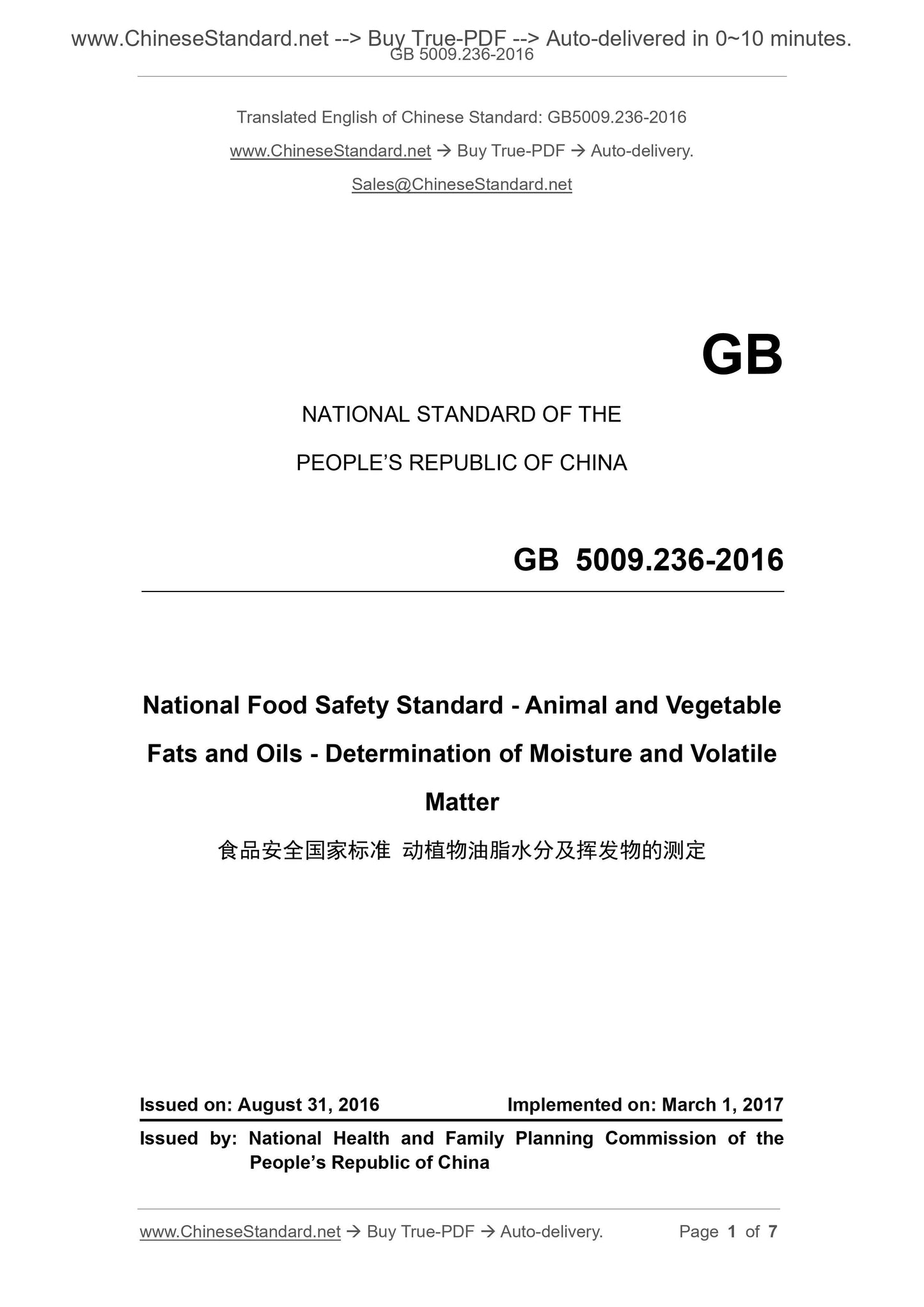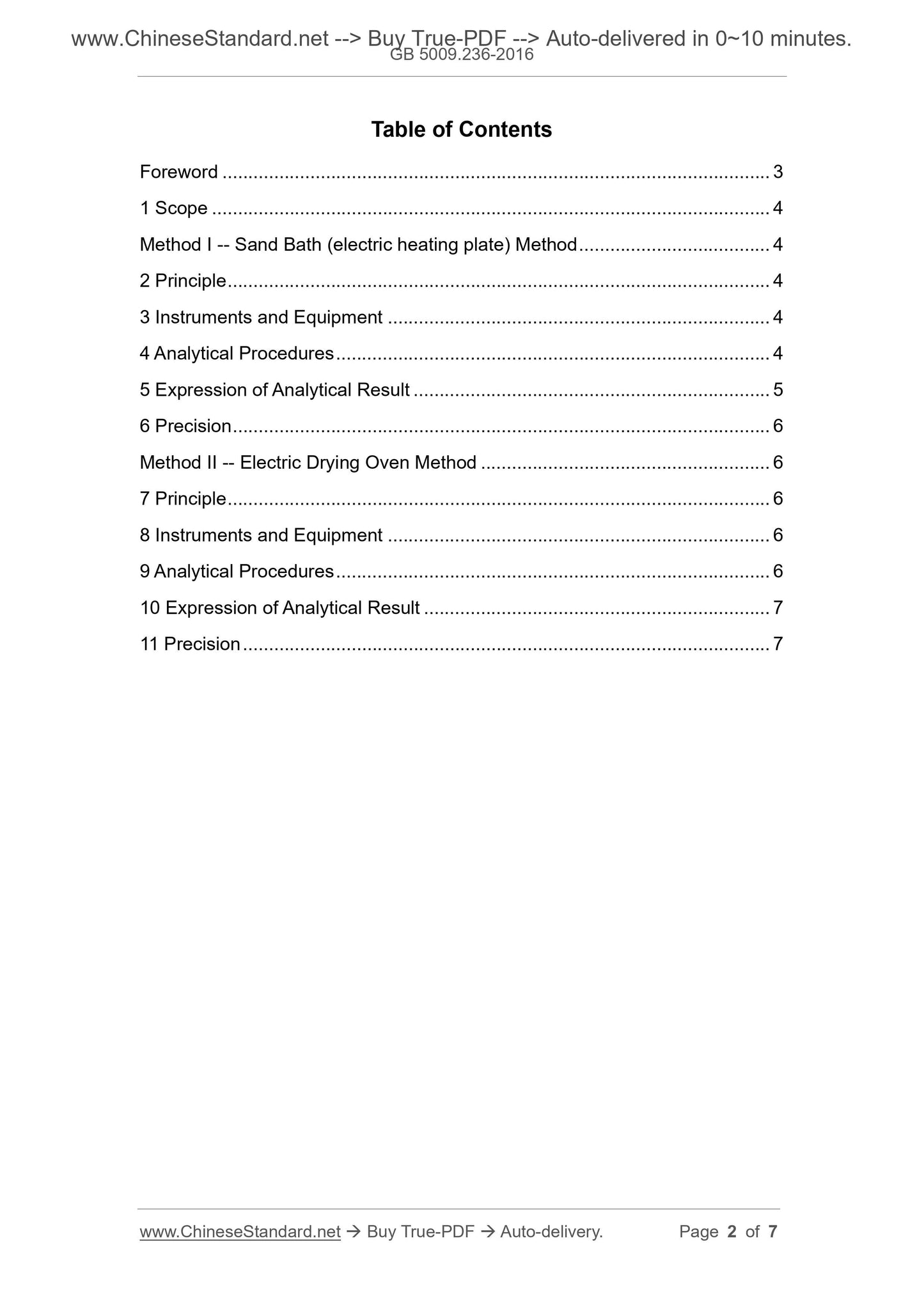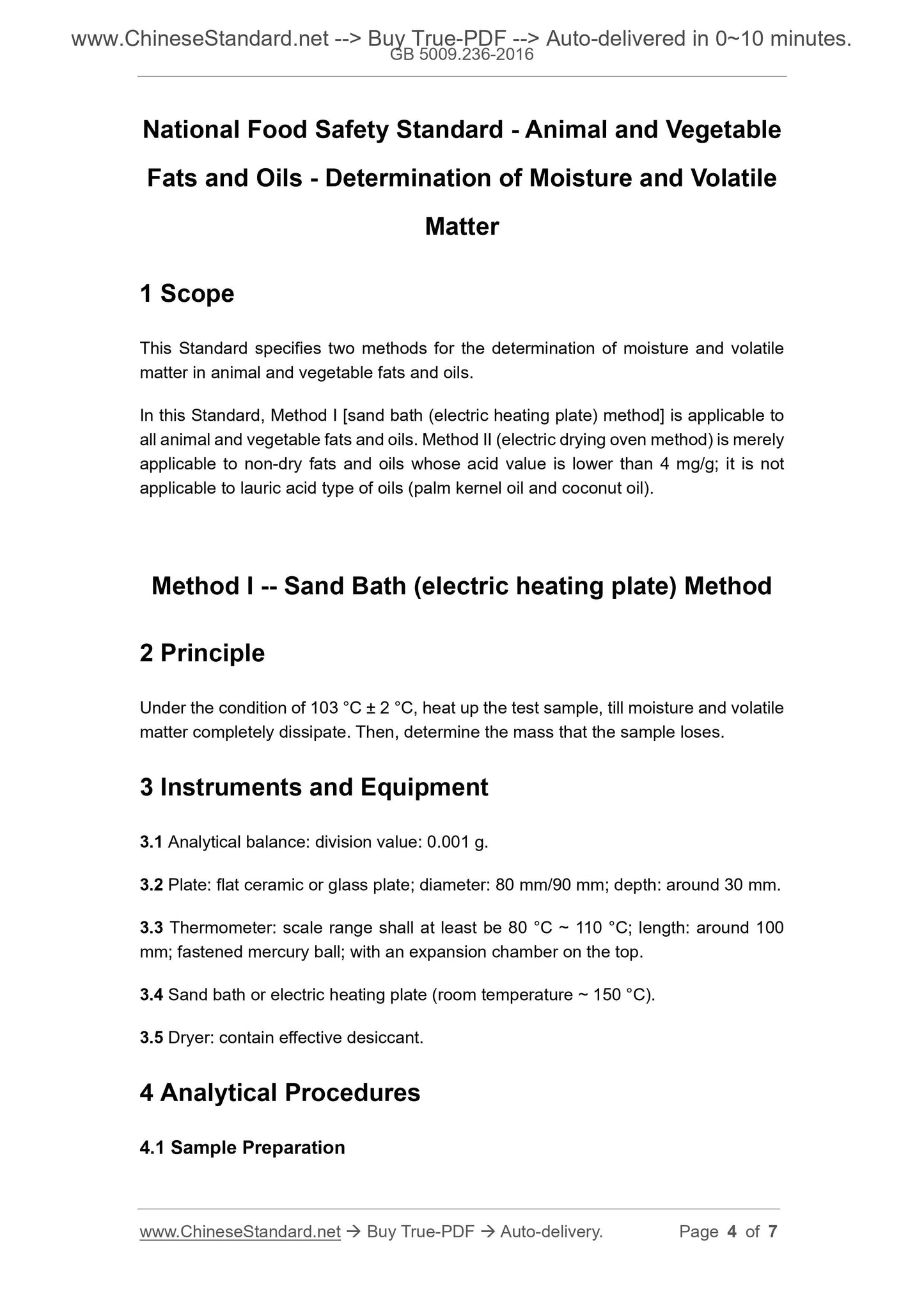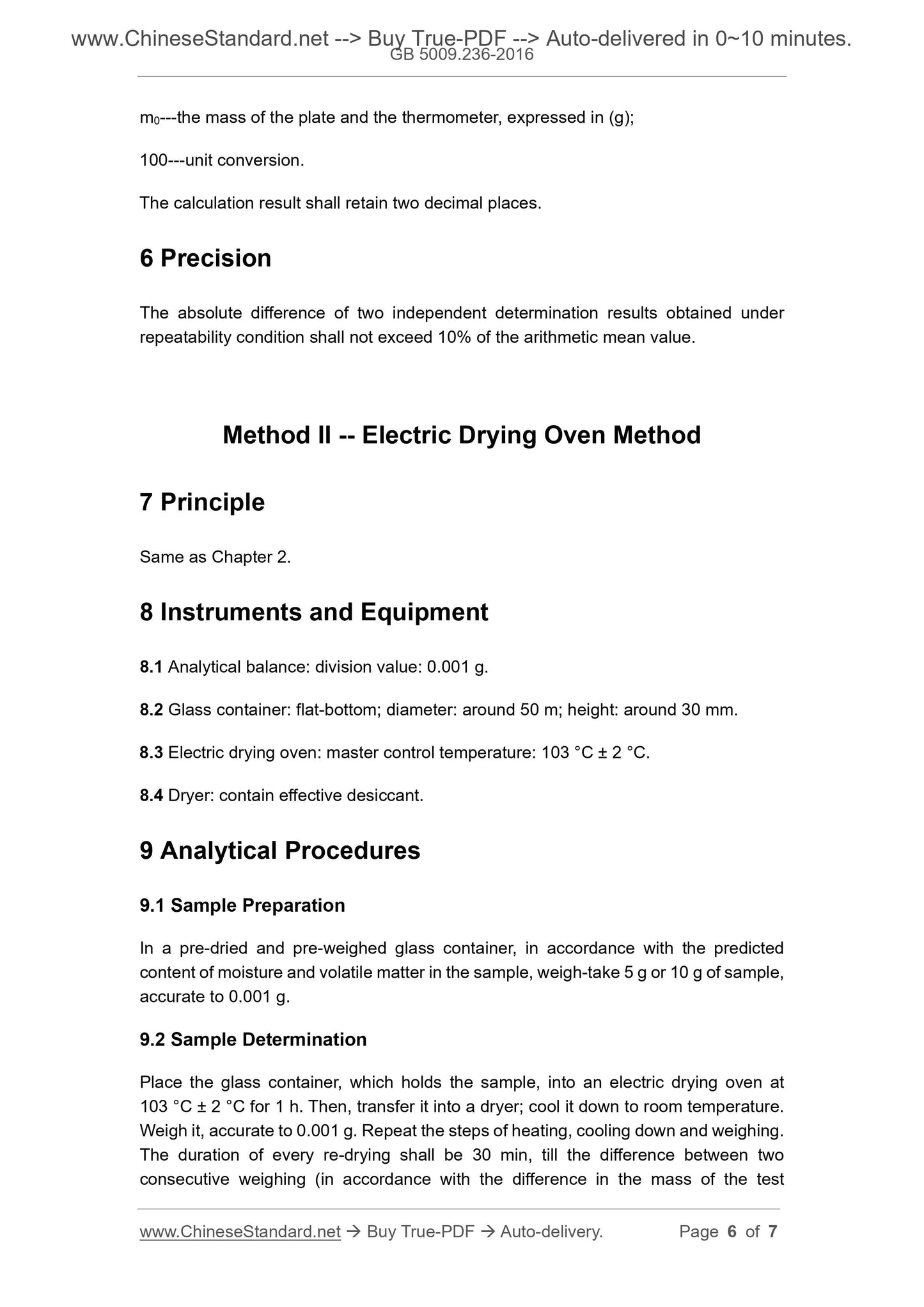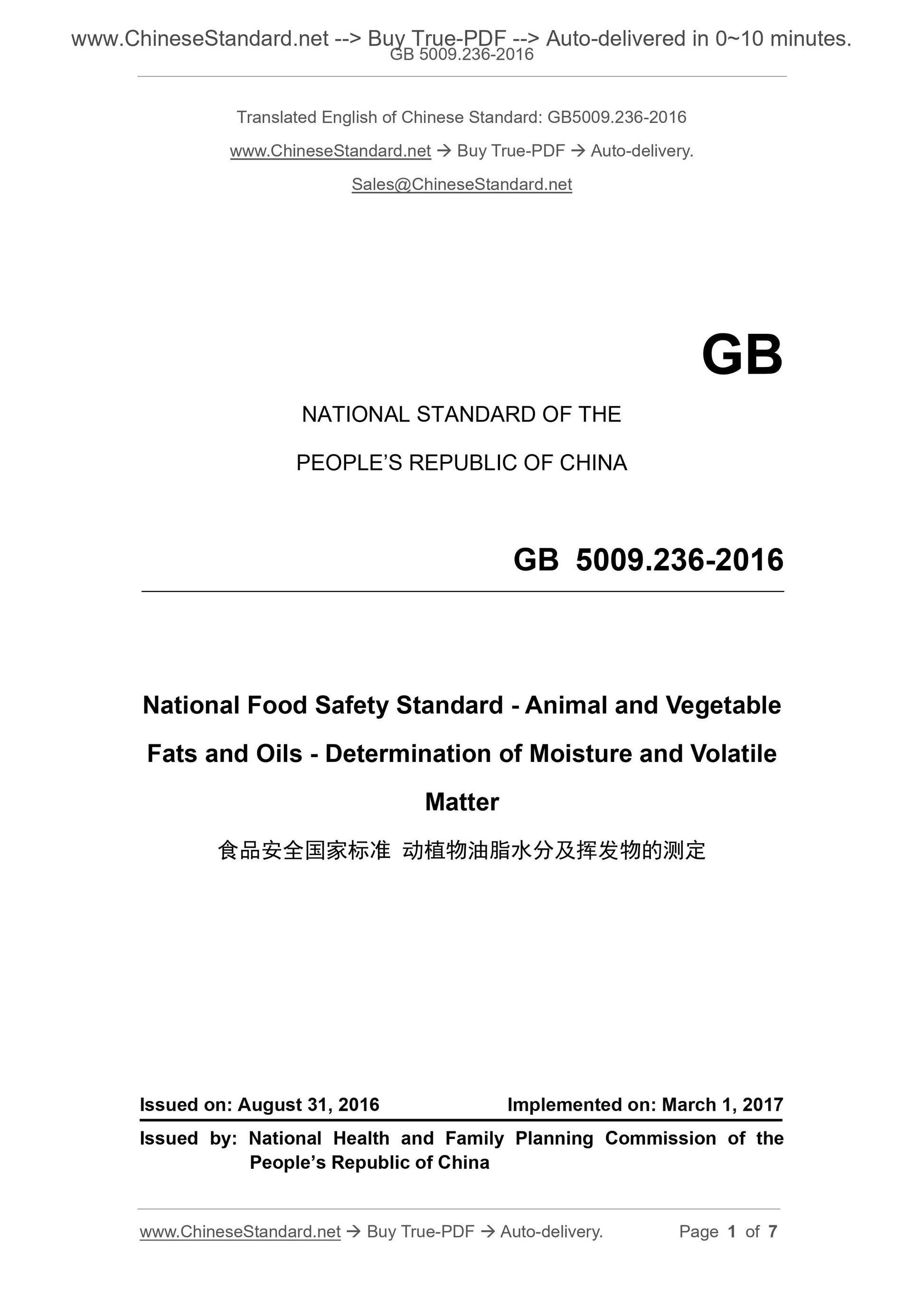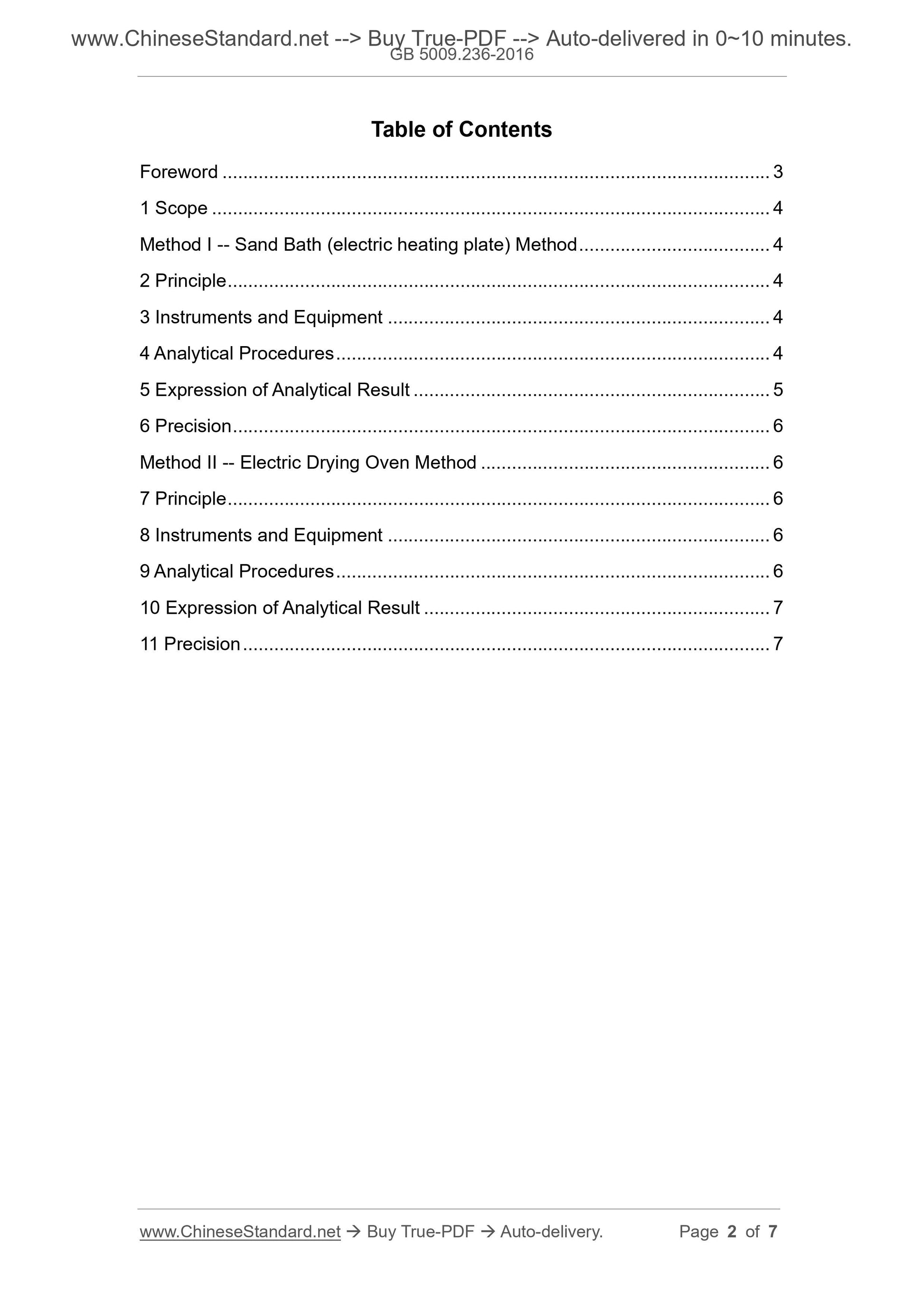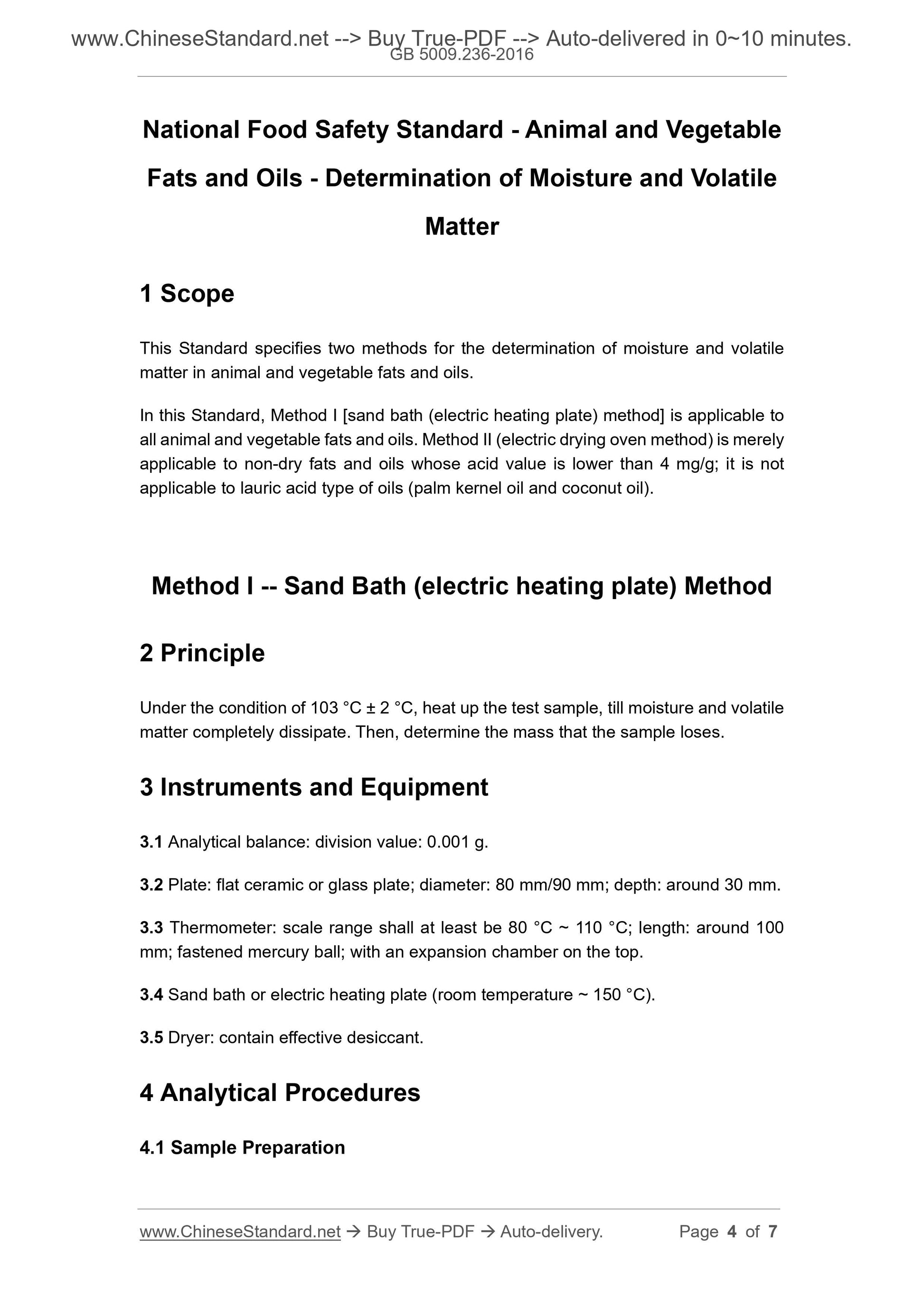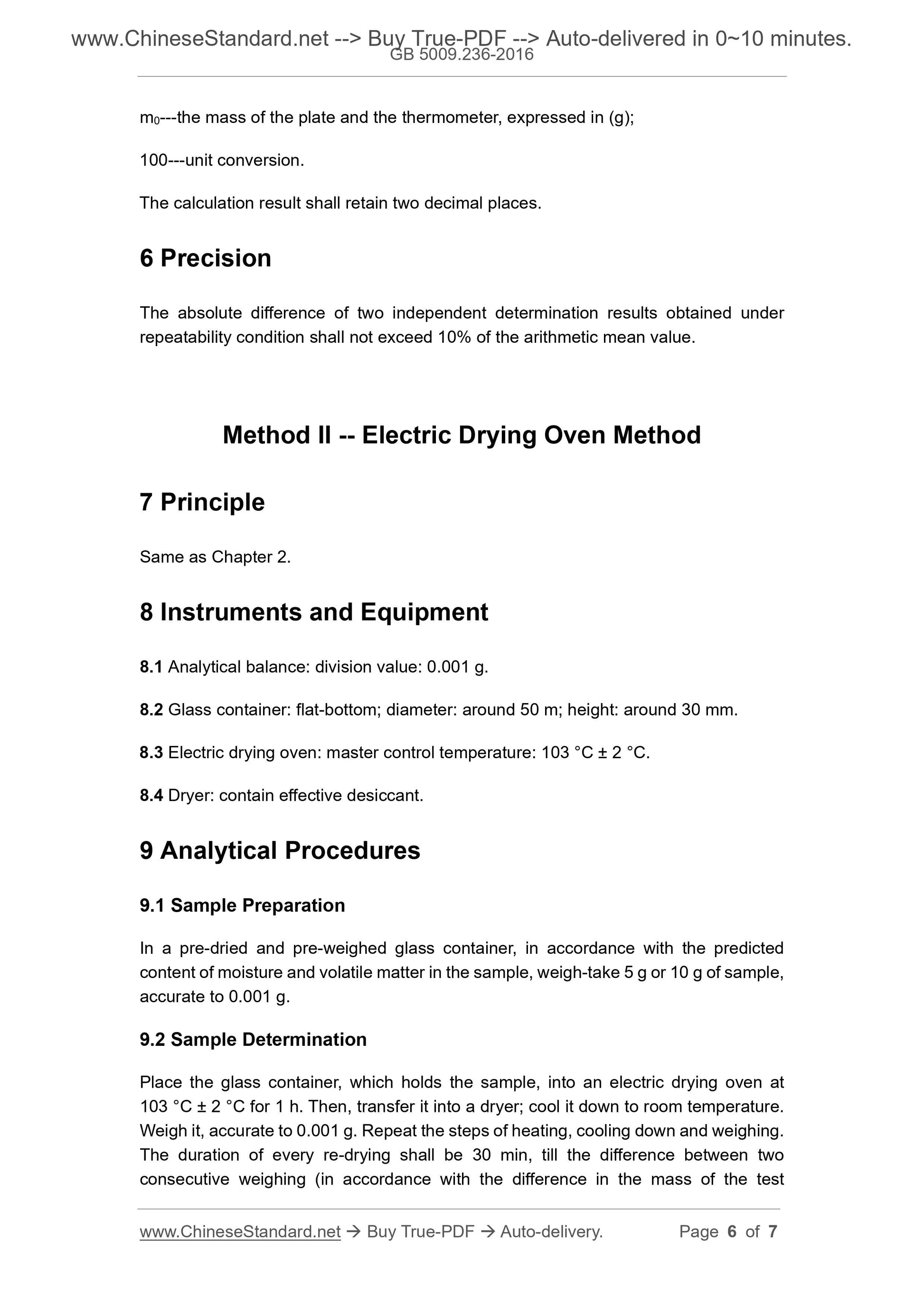1
/
of
4
www.ChineseStandard.us -- Field Test Asia Pte. Ltd.
GB 5009.236-2016 English PDF
GB 5009.236-2016 English PDF
Regular price
$70.00
Regular price
Sale price
$70.00
Unit price
/
per
Shipping calculated at checkout.
Couldn't load pickup availability
GB 5009.236-2016: Animal and vegetable fats and oils -- Determination of moisture and volatile matter content
Delivery: 9 seconds. Download (and Email) true-PDF + Invoice.Get Quotation: Click GB 5009.236-2016 (Self-service in 1-minute)
Newer / historical versions: GB 5009.236-2016
Preview True-PDF
Scope
This Standard specifies two methods for the determination of moisture and volatilematter in animal and vegetable fats and oils.
In this Standard, Method I [sand bath (electric heating plate) method] is applicable to
all animal and vegetable fats and oils. Method II (electric drying oven method) is merely
applicable to non-dry fats and oils whose acid value is lower than 4 mg/g; it is not
applicable to lauric acid type of oils (palm kernel oil and coconut oil).
Method I -- Sand Bath (electric heating plate) Method
Basic Data
| Standard ID | GB 5009.236-2016 (GB5009.236-2016) |
| Description (Translated English) | Animal and vegetable fats and oils -- Determination of moisture and volatile matter content |
| Sector / Industry | National Standard |
| Classification of Chinese Standard | X04 |
| Word Count Estimation | 5,518 |
| Date of Issue | 2016-08-31 |
| Date of Implementation | 2017-03-01 |
| Older Standard (superseded by this standard) | GB/T 9696-2008; GB/T 5528-2008 |
| Regulation (derived from) | Announcement of the State Administration of Public Health and Family Planning 2016 No.11 |
| Issuing agency(ies) | National Health and Family Planning Commission of the People's Republic of China, State Food and Drug Administration |
Share
